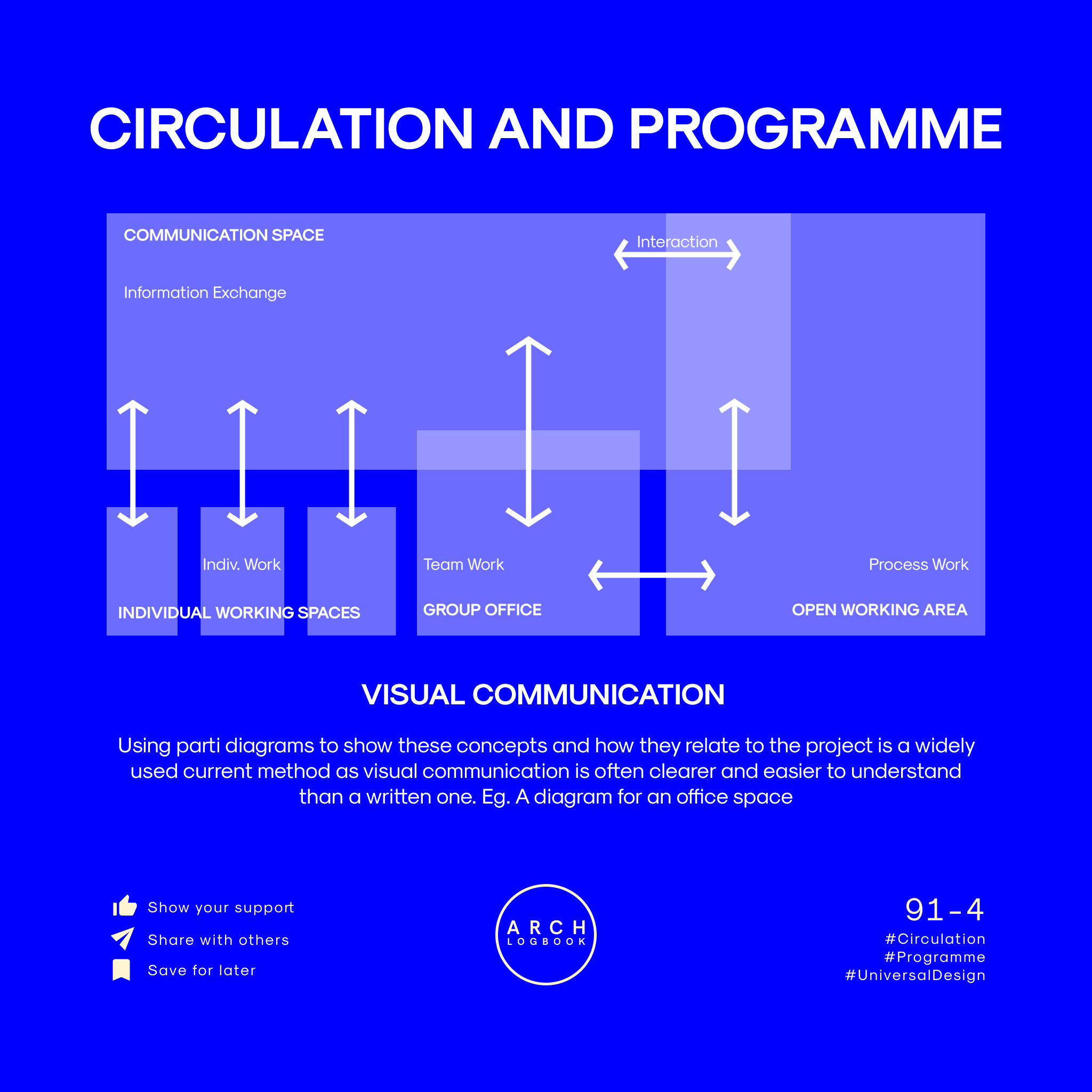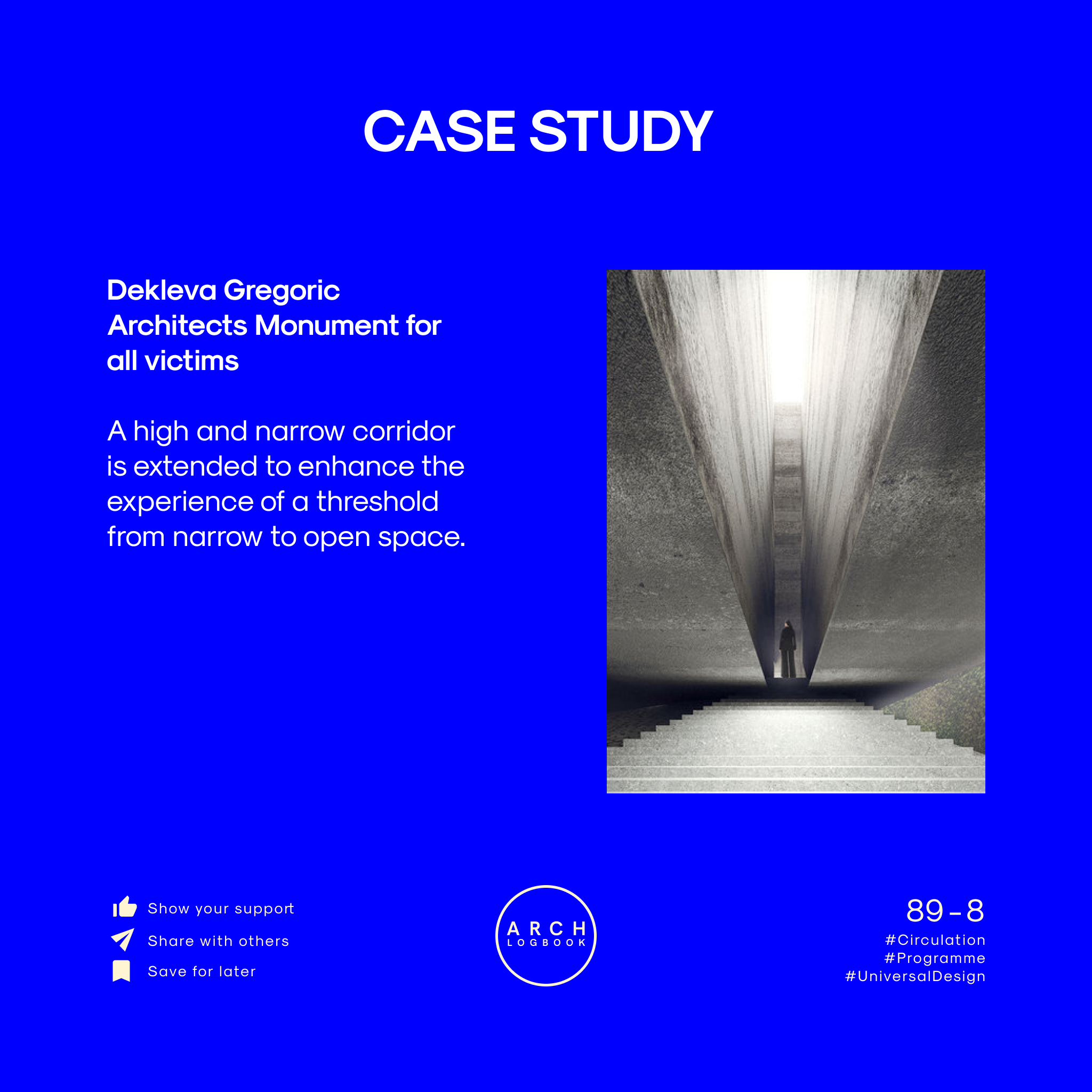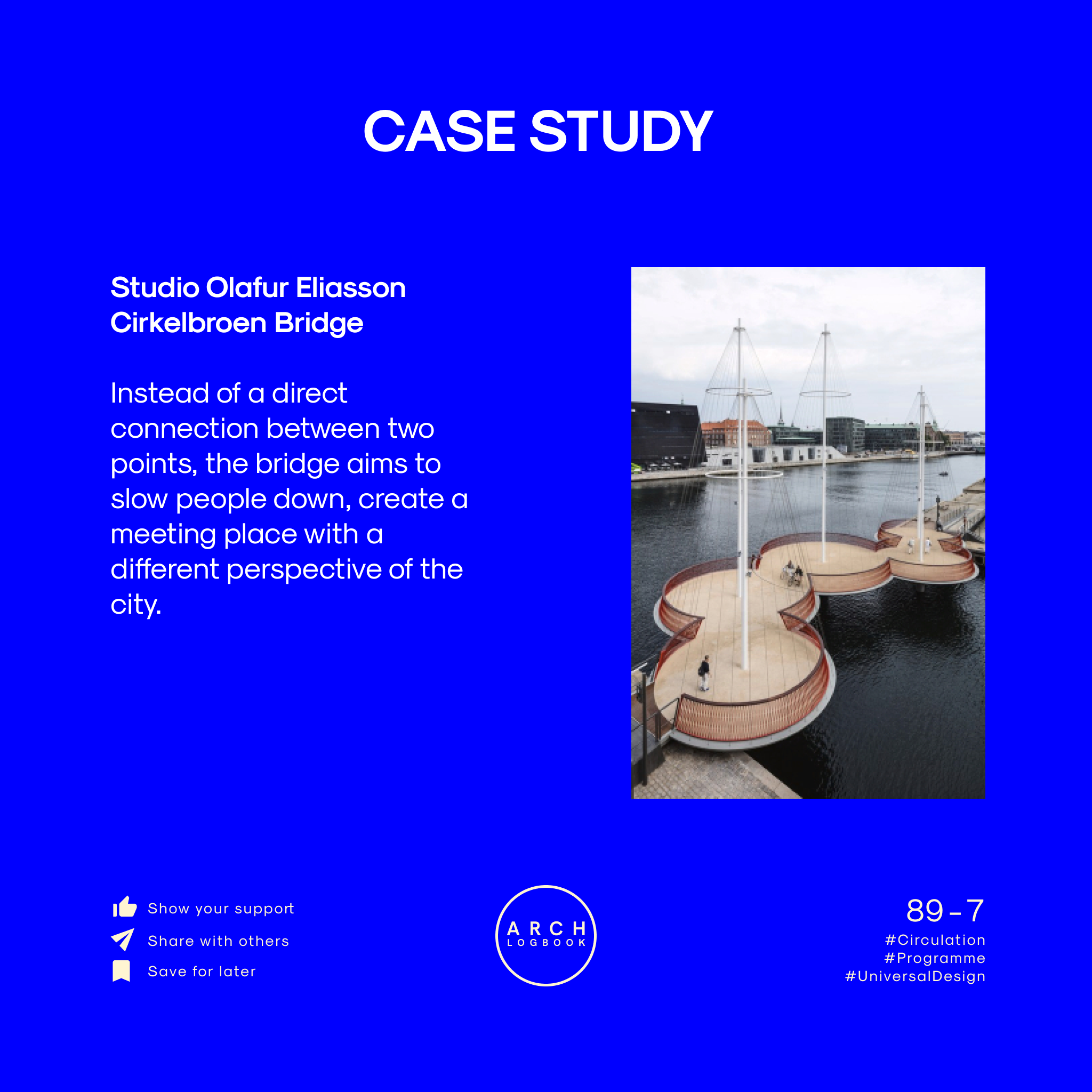As architectural designers, we are designing for the user, circulation and programme are the core elements where we connect a structure to the people.
What is this building stands for? How do we interact with it? Why is it here? These and more are the very basic questions we ask ourselves when we start to design and most of the answers are to be found in the circulation and programme concepts.
These two terms are also perpetually linked, since we have to understand and form them together to reach the best result.
Thus, in this post, we dive deep into the design for circulation & program, two fundamental concepts in architectural design.
Post contents
- What is Circulation & Program?
- Why is Circulation & Program important?
- Aspects of Circulation
- Aspects of Programme
- Relationship between Circulation & Programme
- Common Terminology
- Case Studies
- Things to Note
- Further Reading
What is Circulation & Program?
Circulation is a concept for the design of flow of people through the building.
Program is the design of the function of the various spaces within the building.


Why is Circulation & Program important?
Without a proper programme, a building would work as an empty shell. The spaces would have no relationship with the action inside and this creates a shallow quality of architecture. Imagine a church a place designed for a shop.
A logical circulation concept is always necessary for the high quality architectural experience. Not only for the special experiences itself but also the daily ones. As crowd leading and level differences sounds interesting, escaping routes and daily paths are critically important in terms of good design.
Altough it’s open and exciting to manipulate these aspects to create unique experiences, understanding the key elements are always a must.
Aspects of Circulation
Circulation can be sometimes an underestimated aspect in design but can also make the overall experience very interesting.
In this section, we will look into the circulation typologies and how attention in circulation may create specific spatial experiences.
Types of Circulation
To understand easier, we can simply divide the concept in different types.
These types would be project dependent, but might include:
Direction: Horizontal or vertical
Type of use: Public or private, primary or secondary
Frequency: Common or emergency
Time: Morning, day, evening, continuous

DIRECTION - VERTICAL vs HORIZONTAL
VERTICAL: moving from one level to another; stairs, lifts, ramps, ladders and escalators
HORIZONTAL: along hallways, atria, paths, entries and exits; also affected by the furniture layout, or other objects in the space.

TYPE OF USE
Public: Widely and easily accessible areas. Circulation is often overlapped with other functions, such as a lobby, atrium, gallery etc.
Private: Movements within the building which require a degree of privacy. In a house this might be the back door, in a large building the back of house, staff offices, technical or storage zones.

DESIGNING CIRCULATION
A classic circulation pathway is: clear and unobstructed; also follows the shortest distance between two points. Visibility, crowds movement and clear escape paths are key.
But circulation can also be used to create a unique architectural experience by breaking these rules.

Aspects of Programme
Having a concept of circulation is always linked to the programme of the design.
To understand the programme and the overall relationship of programme and the final design regarding fit, flow, function, form and their relationship with each other - see the slideshow below.
Elements of Programme - Key Use
The main activities of a building.
A general term which is often in relation with the term typology.
Eg. Bank, Concert Hall, Museum, Stadium, House

Elements of Programme - Key Zones
General relationships and spatial requirements of the building or site. Private and public spaces are often considered here.
Eg. Lobby, Auditorium, Exhibition Space, Field, Back of House, Entry, Exit

Elements of Programme - Individual Spaces
Specific spaces in the Key Zones such as Ticket Booth, Seating Aisle, Bathrooms etc. During the design process these elements and Key Zones are often in an interrelationship. Rethinkings and re-zonings often and should happen to achieve the best result.

FUNCTION - ACTIVITIES
After clearing the key elements of the programme out, the next step would be thinking spaces for the required / designed activities.

FIT - SPATIAL REQUIREMENTS FOR THE ACTIVITIES
Width and heights of spaces, cubical extents, single vs double height, surface-to-volume ratio and many other programmatic requirements and how it affects form.

FLOW - THE RELATIONSHIP BETWEEN SPACES
The logic of the movement from one activity to another. Not only a good circulation but also the sequence between activities is key here. Spaces can also be transitionary, flexible, spill out, dynamic and even overlapping like circulation.

FORM - GEOMETRY OF BUILDING COMPONENTS
Generation or relation to a form through arrangement of spaces. This relationship can be reciprocal, indifferent or conflicting. Through all these steps, the context plays also a big role.

What’s the Relationship between Circulation & Programme?
After understanding the concepts of circulation and programme, it's time to see their relationship and how to use them to curate spatial experiences or efficiency.
It is best to use parti diagrams to communicate about these aspects and finishing with two case studies of different work space designs.
See the images below for more details.




Case Studies
Here are some case studies for your learning of how circulation and program design is done around the world across different building typologies.




Key Terminology
Bubble Diagrams
Commonly used diagrams to explain concepts of programme
Common circulation
Every day paths of a building, site or area
Cross-programme
To add, mix, or intersect different programmes that we wouldn't usually expect to go together. A museum as a hotel?
Emergency circulation
Escape paths to use in occasion of an emergency
Function
Activities that are planned to happen in a designed place.
Furnishing
Furniture concept of a space. Also used to show the programme and is an important element of circulation and programme design.
Half Private
Spaces that are accesable during certain periods of the time or by certain groups of people. Eg. A courtyard of a residential building, a school etc.
Horizontal Circulation
Paths that are on one level.
Private
Spaces that are accesable to certain people. Eg. a house, staff room, bedroom
Programme Inversion
After designing the expected programme, inverting it and making a statement via an unexpected programme design. Eg. A public rehersal room.
Public
Spaces that are accesable by everyone.
Residential
A programme of multiple living spaces in one building.
Sectional Zone Diagrams
Used to show ideas in a section of a building.
Vertical Circulation
Paths that connects different levels of a building.
Visual Communication
A tool to tell ideas using less words but more visuals.
Things to note
Understand the logic
A logical function flow is important in creation of a good architectural design. Eg. If a person has to spend ten minutes to reach the restroom, this would result in dissatisfaction, less efficiency and ultimately bad experience. The flow between places are always good to think.
Establish the function
Functions are often how we describe a building. A dormitory with a gym for example. It makes a lot of sense if the functions have a relationship with overall concept of the design.
Have an agenda
A statement, to stand for something. An agenda makes decision making process a lot clearer and allows us to have bold ideas. For a space that people should feel exposed can be transparent or translucent, accesable from every direction, light-structured but also the items in that space can be thrown around or hanging from the ceiling instead of put into a closet.
Ultimately once we establish the story behind the building, we as architects, curate the spatial experience. The sequence of the path and the program is unique to each building.
Comply to building codes
Building codes have limitations which can be frustrating but also be a help sometimes. Limitations can be helpful to put ideas together or lead them.
Further reading
ARCHITECTURAL CONCEPTS: PROGRAMME and ARCHITECTURAL CONCEPTS: CIRCULATION by Sophie Hamer
http://portico.space/journal//architectural-concepts-programme
http://portico.space/journal//architectural-concepts-circulation
Architecture x Movement: How Human Circulation Networks Can Shape The Workplace
https://issuu.com/benjaminhoong/docs/00_thesis_booklet
If you loved this post, feel free to comment and share withanyone who will benefit from learning more about circulation and program in architectural design.
.png)





